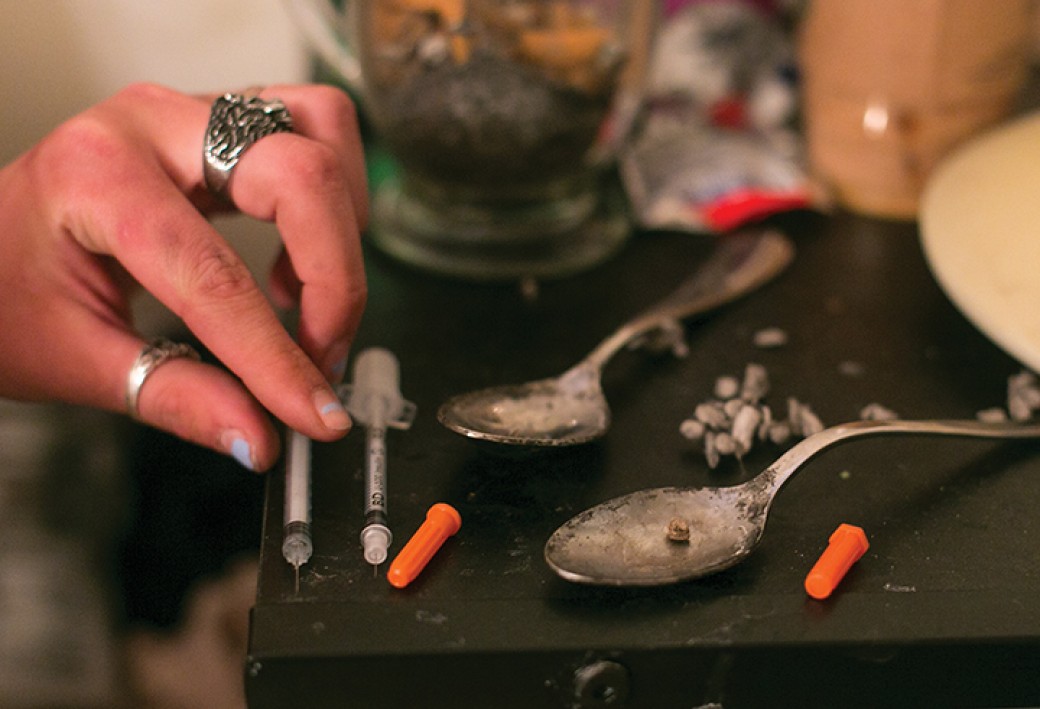Views expressed in opinion columns are the author’s own.
One day in the middle of December, I woke up to text messages saying the boyfriend of a girl I danced with in high school had died of a heroin overdose. I never talked to him, but I was close with his girlfriend, and I remembered his face from bonfires and parties. When I told my mother, she said she remembered sitting next to him at football game halftimes and dance competitions, where they had come to see me and my friend perform.
Two weeks later, a friend of mine from the same high school told me that he’d had a falling out with his friend, who had been diagnosed with bipolar disorder and ADHD. His friend was recently hospitalized for taking six tabs of acid in one month, causing him to have a psychotic episode and ultimately renounce his relationship with my friend.
Though seemingly unrelated, these two people both lived in the small town of Poolesville, Maryland, home to some Civil War history and one of the best high schools in the state. The town is modest; attractions beyond the high school include a Tractor Supply Co. and a CVS. The nearest stoplight and grocery store are a 15-minute drive away if you don’t get stuck behind a slow-moving piece of farm equipment on your way out of town.
The road I used to drive on to get there is nicknamed the “heroin highway.” There is nothing inherently wrong with small towns, but something about rural areas like Poolesville seem to facilitate drug addiction and abuse.
Many people have moved to Poolesville over the past few decades, and many of them are part of the upper-middle class. In my experience, the families on the left side of the income curve are families who have been there for multiple generations and who have deep ties to the small-town community. With streets titled with your family name and little extra income, one may feel a sort of obligation to stay there — or, at least, have little inclination to leave their rural bubble.
An extended article was published in The New Yorker in June of 2017 titled “The Addicts Next Door,” which chronicled the extensive small-town ground that heroin has recently infiltrated. From what I could find, the Poolesville area started publishing news about it as early as 2005.
There is no debating that heroin is a national issue. Members of both political parties stood and applauded when, during the State of the Union speech, President Trump honored a police officer who adopted a baby from a heroin-addicted mother. In Maryland alone, heroin-related deaths rose steadily from 2010 to 2015 and spiked in 2016; preliminary counts estimate the number of heroin-related deaths in 2017 to be around 847.
Some Maryland counties, such as Prince George’s and St. Mary’s have started taking legal action against and distributors of illegal opioids. Montgomery County in particular has been cognizant of higher levels of opioid addiction and opioid-related deaths.
[Read more: Prince George’s County is suing opioid manufacturers]
Many would agree that more needs to be done for prevention and punishment of opioid/drug abuse. The two friends whose stories I recounted earlier, neither older than 22, were moved to abuse drugs in ways that endangered their health, in ways that are often irreversible. Instead of just cutting off manufacturers and dealers of illegal opioids and strictly regulating medical opioid prescriptions, we need to look closer at why people are moved to abuse and thus get addicted to these drugs in the first place.
Michela Dwyer is a sophomore English and philosophy major. She can be reached at mgdwyer3@gmail.com.



